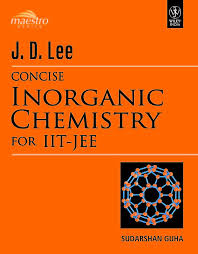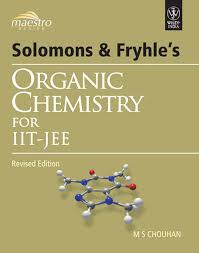|
#2
10th December 2014, 11:33 AM
| |||
| |||
| Re: IIT JEE Inorganic Chemistry Exam Syllabus
Here is the Syllabus of IIT JEE Inorganic Chemistry Exam which you are looking for . Isolation/preparation and properties of the following non-metals: Boron, silicon, nitrogen, phosphorus, oxygen, sulphur and halogens; Properties of allotropes of carbon (only diamond and graphite), phosphorus and sulphur. Preparation and properties of the following compounds: Oxides, peroxides, hydroxides, carbonates, bicarbonates, chlorides and sulphates of sodium, potassium, magnesium and calcium; Boron: diborane, boric acid and borax; Aluminium: alumina, aluminium chloride and alums; Carbon: oxides and oxyacid (carbonic acid); Silicon: silicones, silicates and silicon carbide; Nitrogen: oxides, oxyacids and ammonia; Phosphorus: oxides, oxyacids (phosphorus acid, phosphoric acid) and phosphine; Oxygen: ozone and hydrogen peroxide; Sulphur: hydrogen sulphide, oxides, sulphurous acid, sulphuric acid and sodium thiosulphate; Halogens: hydrohalic acids, oxides and oxyacids of chlorine, bleaching powder; Xenon fluorides. Transition elements (3d series): Definition, general characteristics, oxidation states and their stabilities, colour (excluding the details of electronic transitions) and calculation of spin-only magnetic moment; Coordination compounds: nomenclature of mononuclear coordination compounds, cis-trans and ionisation isomerisms, hybridization and geometries of mononuclear coordination compounds (linear, tetrahedral, square planar and octahedral). Preparation and properties of the following compounds: Oxides and chlorides of tin and lead; Oxides, chlorides and sulphates of Fe2+, Cu2+ and Zn2+; Potassium permanganate, potassium dichromate, silver oxide, silver nitrate, silver thiosulphate. Ores and minerals: Commonly occurring ores and minerals of iron, copper, tin, lead, magnesium, aluminium, zinc and silver. Extractive metallurgy: Chemical principles and reactions only (industrial details excluded); Carbon reduction method (iron and tin); Self reduction method (copper and lead); Electrolytic reduction method (magnesium and aluminium); Cyanide process (silver and gold). Principles of qualitative analysis: Groups I to V (only Ag+, Hg2+, Cu2+, Pb2+, Bi3+, Fe3+, Cr3+, Al3+, Ca2+, Ba2+, Zn2+, Mn2+ and Mg2+); Nitrate, halides (excluding fluoride), sulphate and sulphide.    |